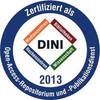In: South-Eastern European journal of earth observation and geomatics, 3 (2014), Nr. 2S. pp. 517-520. ISSN 2241-1224
Preview |
PDF, English
- main document
Download (379kB) | Terms of use |
Abstract
Today, a plethora of approaches exists that can be used for the task of object extraction from LiDAR data (point and/or derived raster information). The majority of approaches deal with the extraction of artificial objects or distinct natural objects (e.g. single trees). Local height variations or number of signal returns are often input to extraction processes. If only relying on pixel‐based concepts, results of such analyses may provide sufficient detection accuracy but they may also generate various misclassified objects since they lack object‐based view. In the presented paper, we developed an Object‐Based Image Analysis (OBIA) approach for building extraction starting from LiDAR point data only. We hypothesize that an OBIA approach could performs better than a pixel‐based approach as it resembles the way in which humans perceive reality. The developed method consists of a set of rules applied to continuously re‐shaped (based on pre‐classifications) candidate objects. The results of the proposed approach have been compared to buildings which were manually identified from a Digital Surface Model (DSM). Primary results show completeness value of 97.80% and correctness of 80.5%.
| Document type: | Article |
|---|---|
| Journal or Publication Title: | South-Eastern European journal of earth observation and geomatics |
| Volume: | 3 |
| Number: | 2S |
| Publisher: | Aristotle University of Thessaloniki |
| Place of Publication: | Thessaloniki |
| Date Deposited: | 12 Aug 2025 08:09 |
| Date: | 2014 |
| ISSN: | 2241-1224 |
| Page Range: | pp. 517-520 |
| Faculties / Institutes: | Fakultät für Chemie und Geowissenschaften > Institute of Geography |
| DDC-classification: | 550 Earth sciences |
| Uncontrolled Keywords: | Remote Sensing, Geography, LiDAR, Image processing and analysis |









